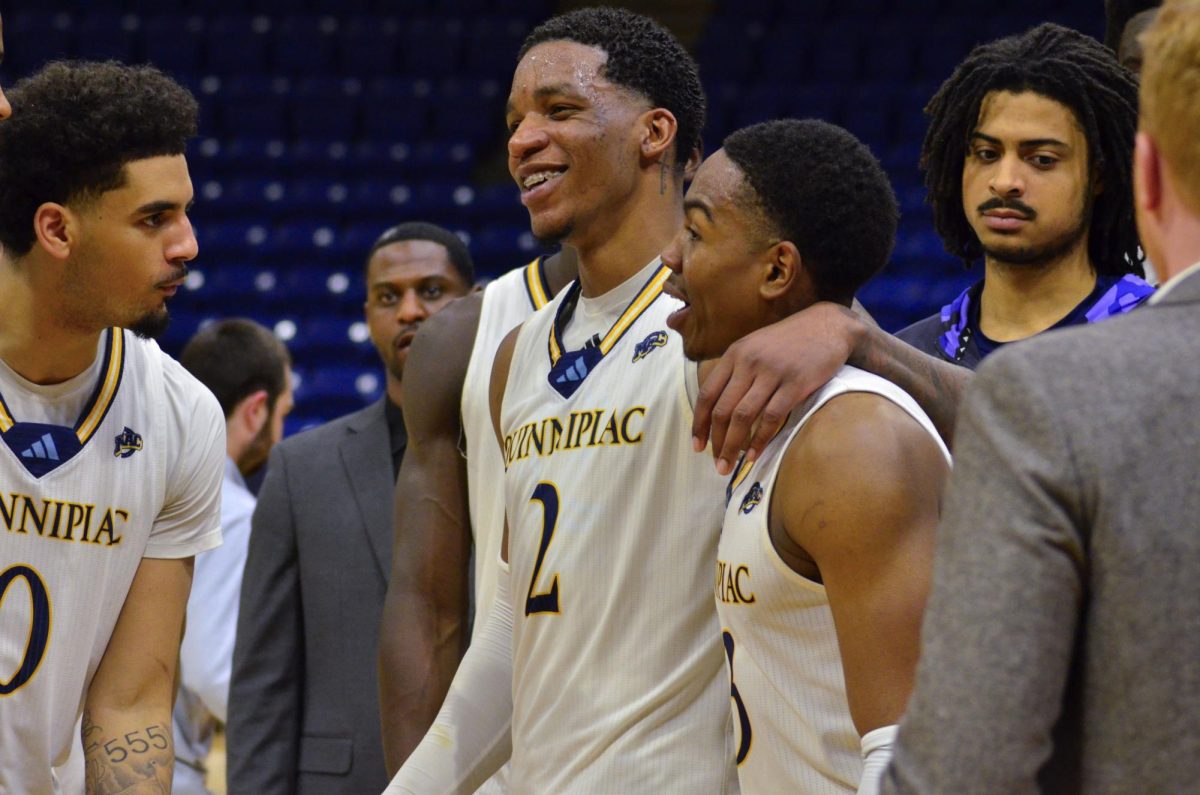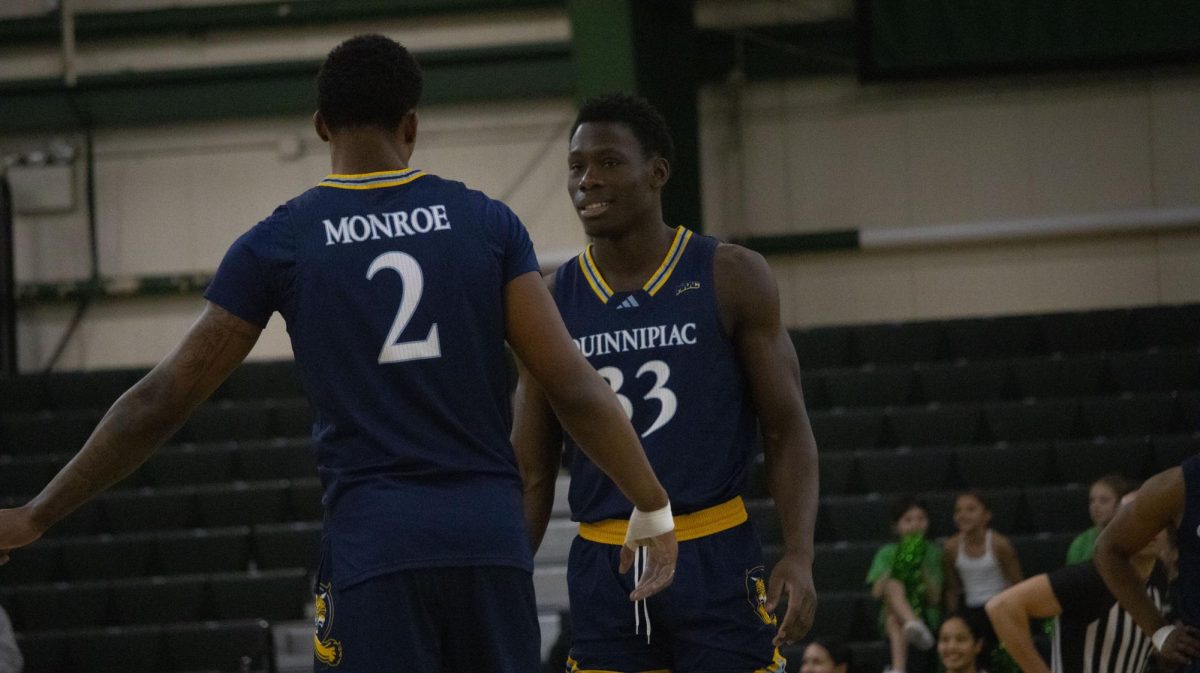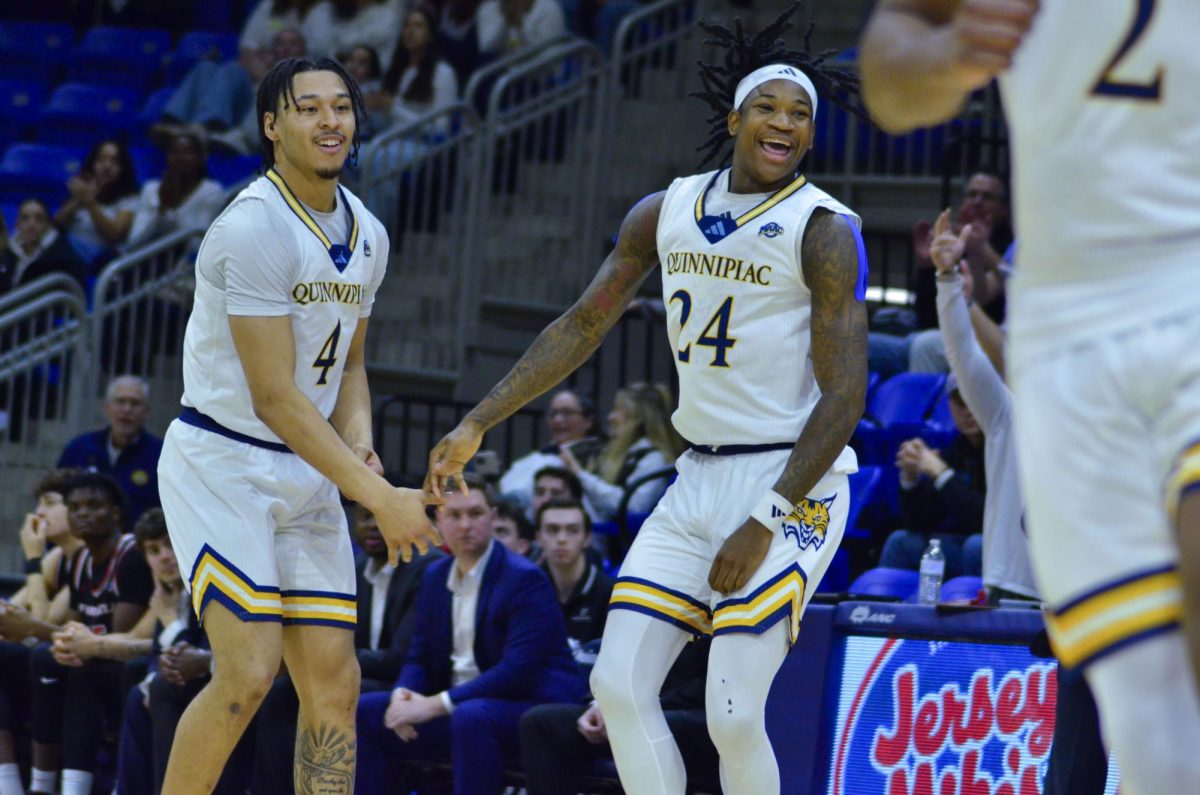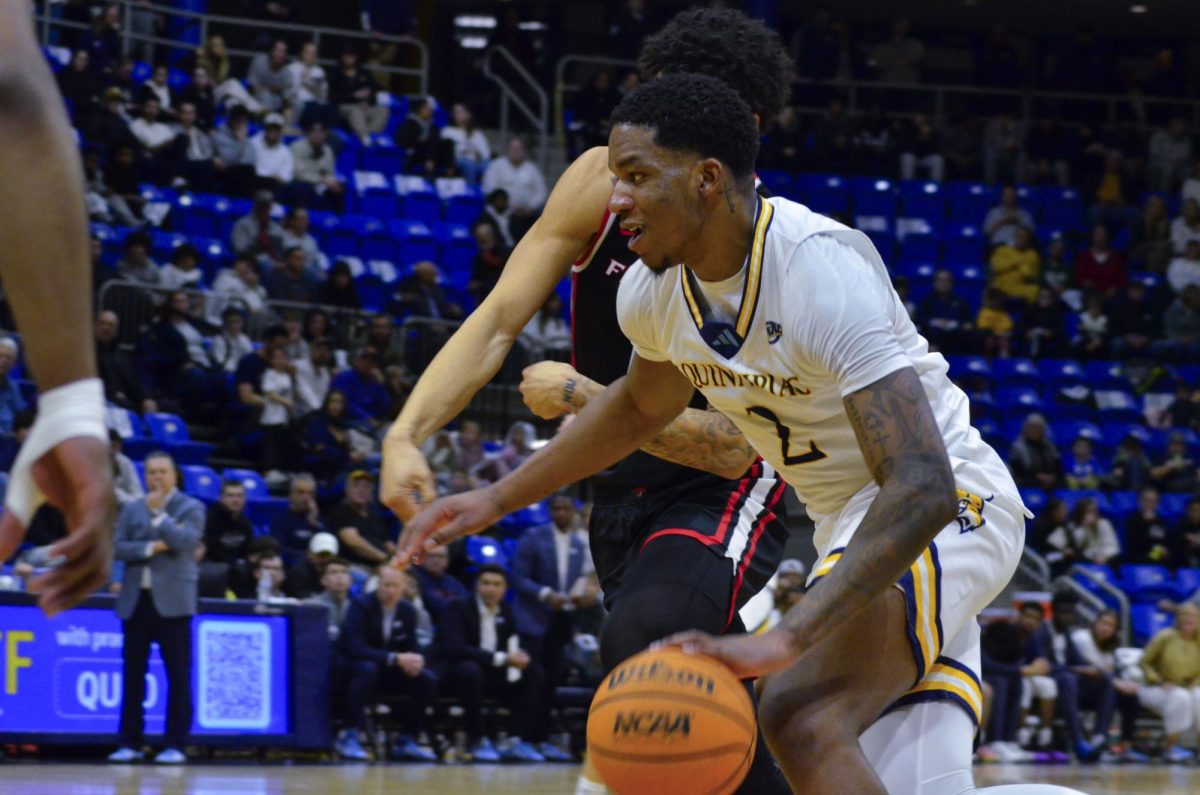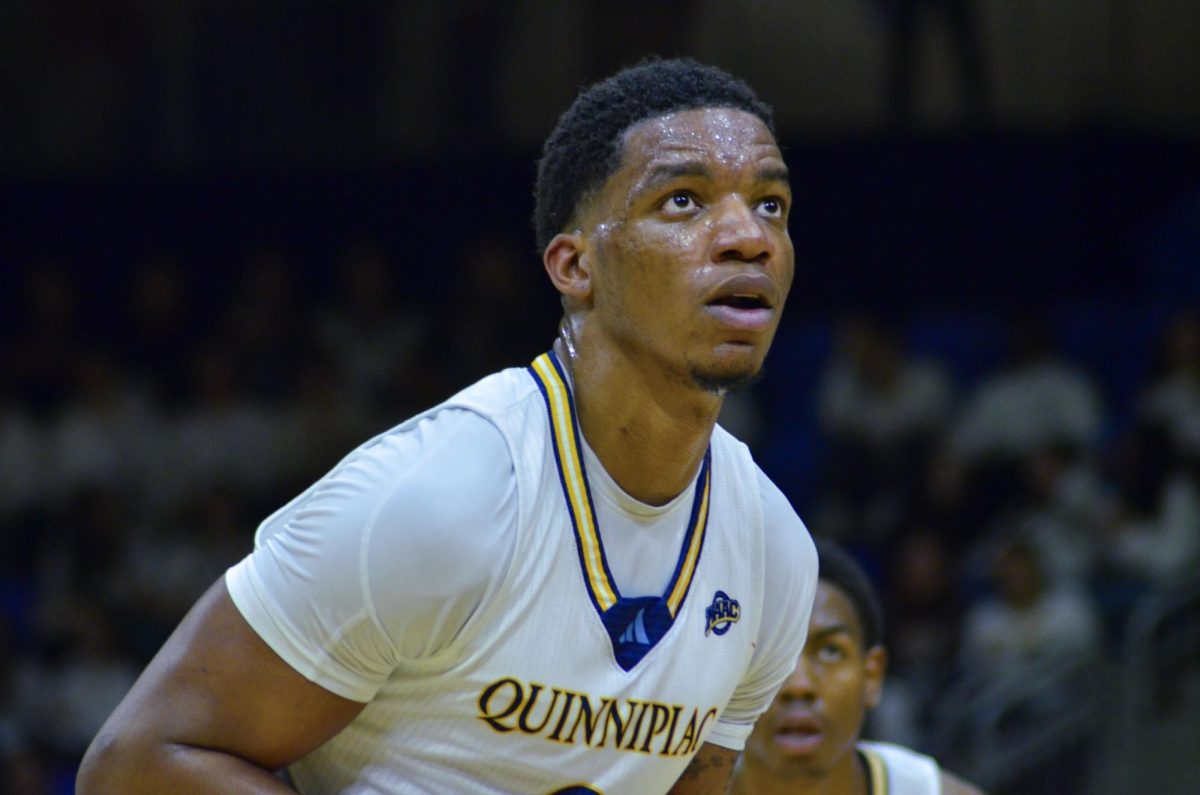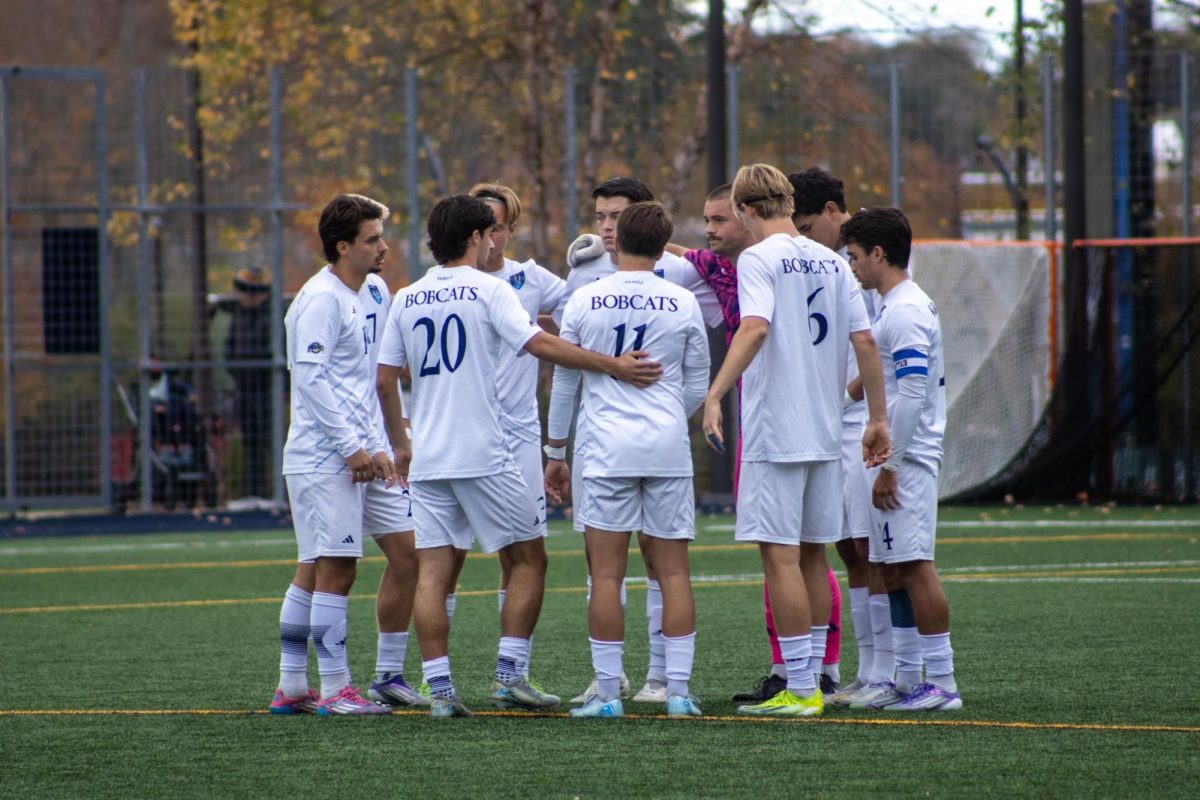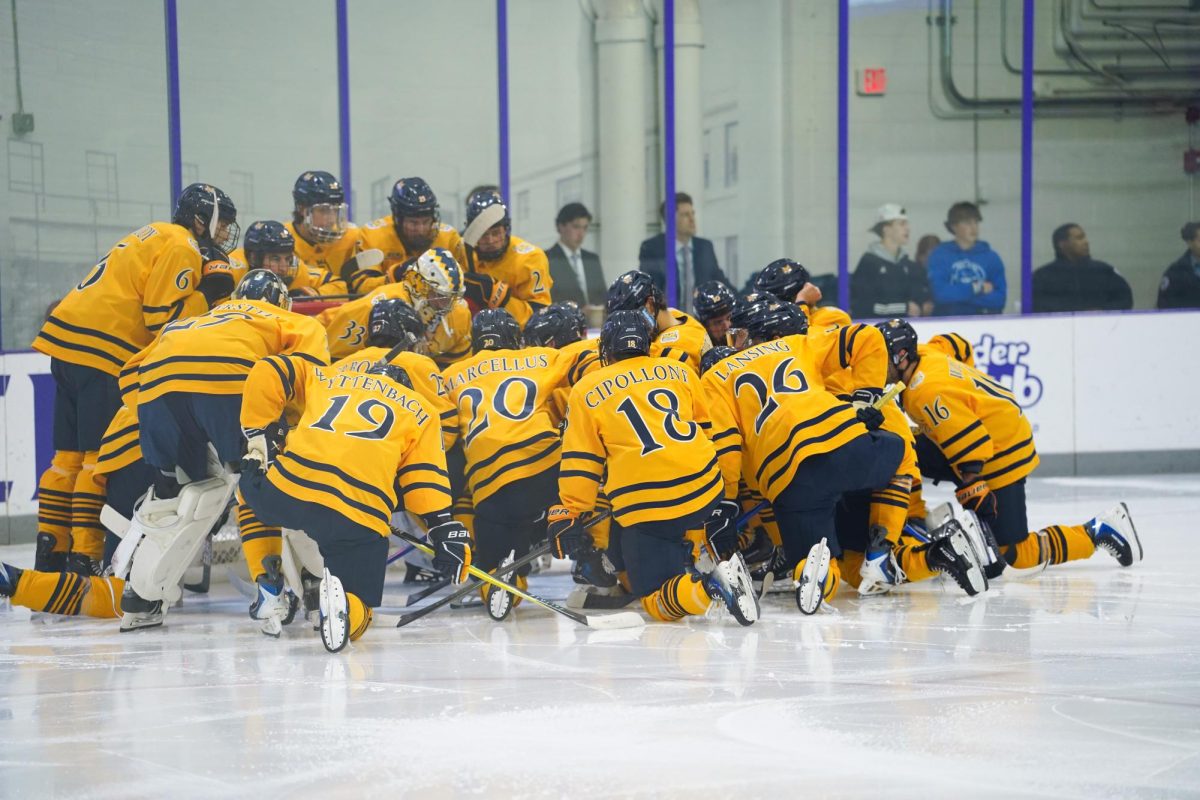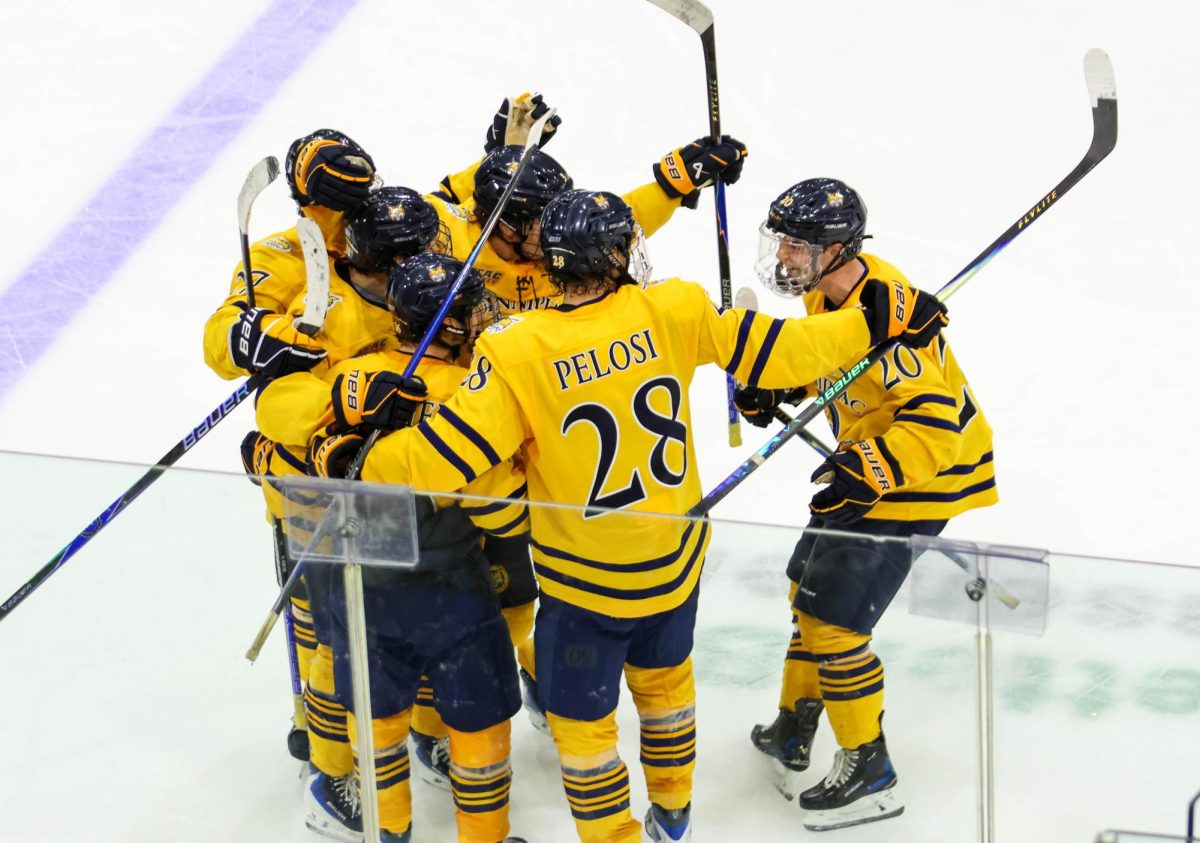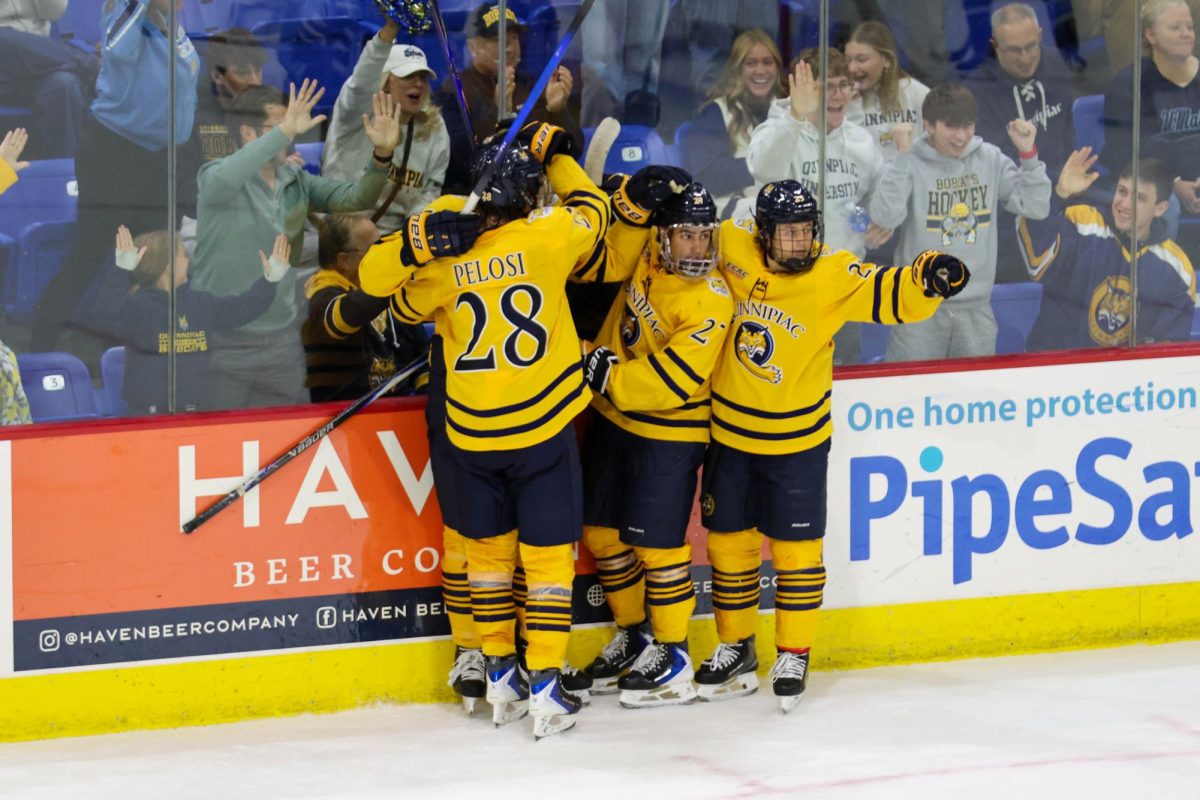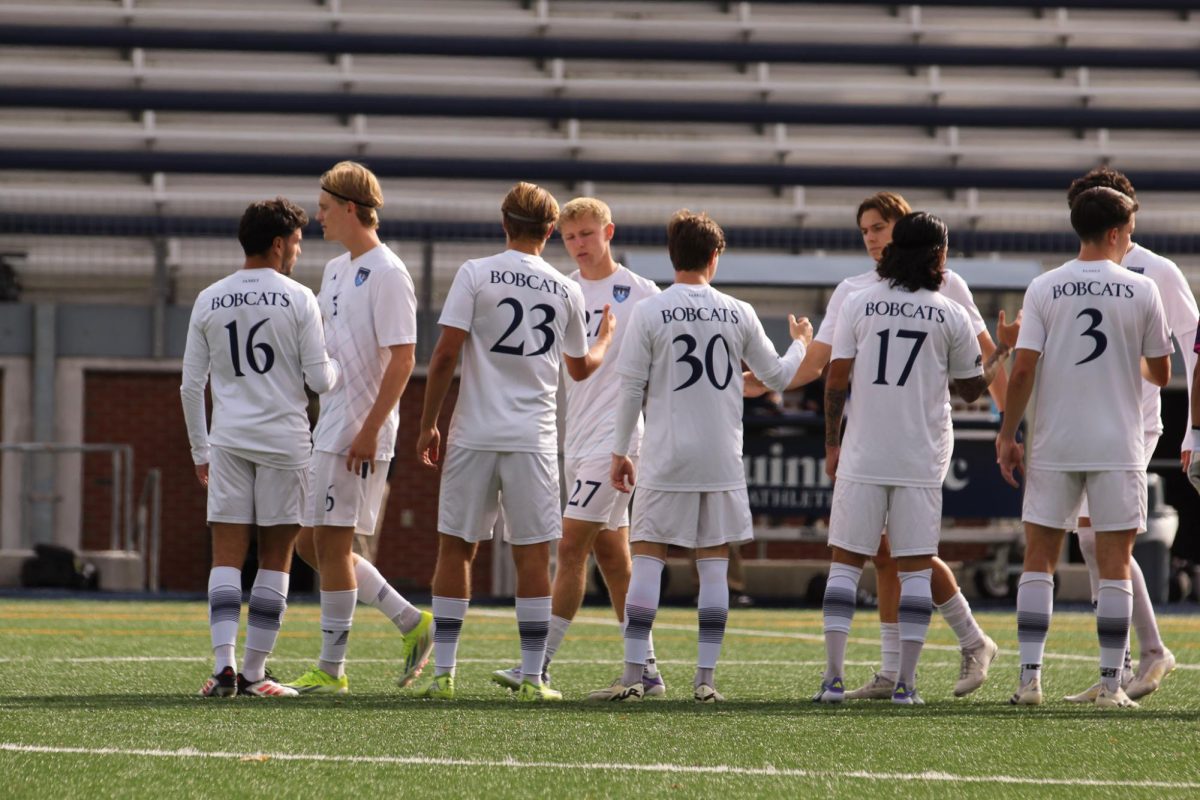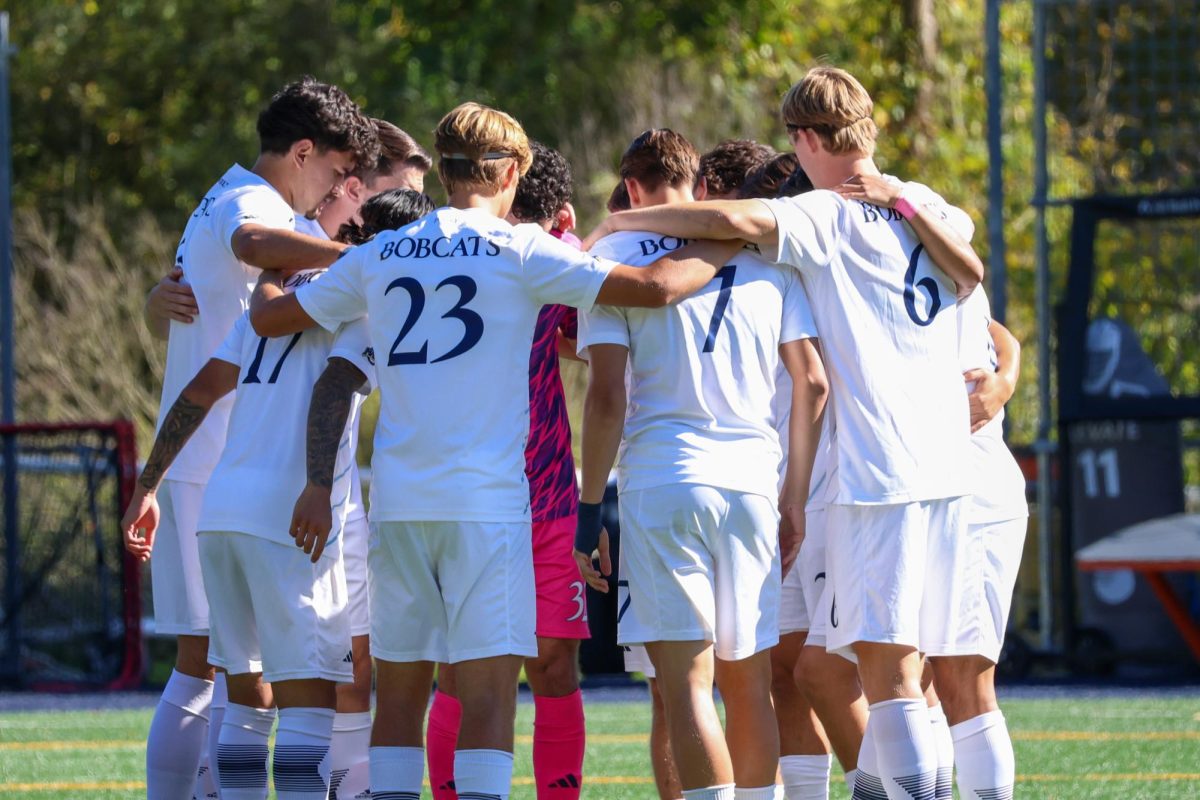Last Season: Quinnipiac’s 15-15 (9-11 MAAC) record isn’t reflective of what the team was capable of. The Bobcats struggled in close conference games, with nine of its 11 losses coming by six points or fewer, not including an upset by No. 11 Marist in the first round of the Metro Atlantic Athletic Conference Tournament.
The Bobcats did feature some impressive non-conference wins including victories over Pac-12 foe Oregon State and crosstown rival Yale in double overtime in the Connecticut 6 Classic. Zaid Hearst was the driving force in both games, but more impressively, held Oregon State’s Gary Payton II scoreless. Payton II, the son of nine-time NBA All-Star Gary Payton, averaged 13.4 points, 7.5 rebounds and 3.2 assists per game, but went 0-for-3 from the field with one rebound and thee assists before fouling out.
The Bobcats limped to the finish line, going 1-4 in its last five games before getting bounced by the Red Foxes.

Losses: Zaid Hearst, Ousmane Drame, Evan Conti, Justin Harris, Emanuel Binyam, Kasim Chandler, AJ Sumbry, T’ziah Wood-Smith
Additions: Abdulai Bundu, Aaron Robinson, Andrew Robinson, Daniel Harris, Donovan Smith, Will Simonton
The Good: In eight seasons under the tutelage of head coach Tom Moore, the Bobcats have only finished below .500 overall twice. In both instances (2008-09 and 2012-13), Quinnipiac finished 15-16 overall and had a winning record in league play.
The Bobcats are a relatively young team with three freshmen and six sophomores, but expect those players to have a big impact, specifically sophomore guard Ayron Hutton. The All-MAAC Rookie team selection appeared in 26 games and accumulated 17 starts as a freshman while posting a team-high 35.7 three-point percentage with a minimum of ten attempts. The Virginia Beach, Virginia-native should assume a similar role this season as one of coach Moore’s primary ball handlers.
Sophomore forward Chaise Daniels will also have a large impact for the Bobcats this season. Daniels appeared in all 30 games for the Bobcats last season with 16 starts. The 6-foot-9, 240-pound Meriden, Connecticut product figures to do a lot of the things Ousmane Drame did: block shots, rebound and contest shots on the interior.
One of the most valuable assets on this year’s squad could turn out to be new assistant coach Tony Newsom. Newsom has spent much of his career in the MAAC, dating back to his college days. The New Jersey native played basketball during his undergrad at Niagara University before transitioning to the coaching side. He spent two seasons with Siena College, four with Rider University and four with Fairfield University, all of which are members of the MAAC. Newsom also spent two years with Holy Cross and seven with Princeton. There may not be another individual with as much MAAC experience as Newsom, and that’s a great thing for Quinnipiac. He joins the Bobcats with 14 years of MAAC experience as a player and coach meaning he knows what works and what doesn’t.
Rebounding has always been a key part of the Bobcats’ plan under coach Moore. Last season, Quinnipiac finished first among NCAA DI programs in defensive rebounds per game (29.00), first in total rebounds per game (45.37) and second in offensive rebounds per game (16.37). While the Bobcats did lose Drame, Quinnipiac did add several players who could take his place. A key statistic to look out for this season is how the team fares on the offensive glass. If the number of offensive rebounds per game drops this year, the Bobcats hope it’ll be a sentiment of improved shooting.
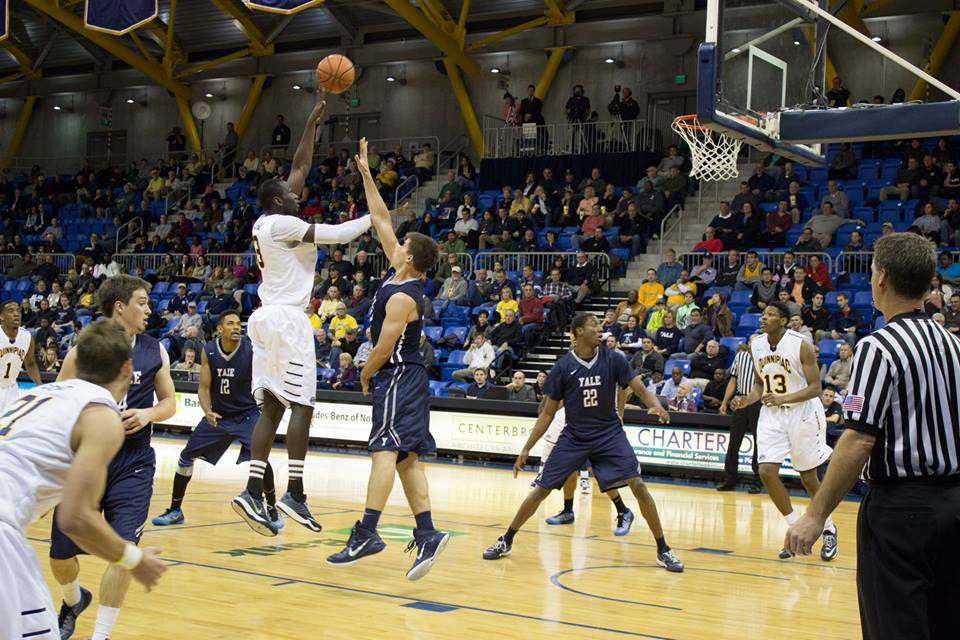
The Bad: The Bobcats returning leading scorer, James Ford Jr., averaged just 5.3 points on 32.9 percent shooting from the field. Quinnipiac struggled the shoot the ball all season, finishing last in field goal percentage i
n the MAAC at 38.9 percent.
Likewise, three-point shooting was another area where the Bobcats struggled, posting a 30.7 percentage, a mark good for 306th place out of 345 NCAA Division I programs. If the Bobcats don’t find a way to generate open looks from distance, expect much of the same this year.
Hearst, a first team All-MAAC selection, and Drame, the reigning MAAC Defensive Player of the Year, both graduated, leaving big shoes to fill. Justin Harris and Evan Conti, who both played the best basketball of their Quinnipiac careers last season, also graduated.
All in all, departures accounted for 66.2 percent of the team’s minutes and 77.9 percent of team’s points in 2014-15.
Defensively, Quinnipiac held its own and limited opponents to fewer than 68 points per game. However, the Bobcats’ defense came up with just 3.6 steals per game, second-to-last in all of Division I basketball. The lack of steals limited Quinnipiac’s fast break opportunities so the Bobcats had to rely on its half court offense more than other teams.
Quinnpiac’s inexperienced roster will have to contend with a ton of firepower in order to compete in the MAAC this season. The Iona College Gaels were selected as the pre-season favorite to win the 2016 league championship, and accordingly so. The two-time defending MAAC regular season champions return senior guard A.J. English, who was the only player in the MAAC to average 20 points, five rebounds and five assists per game. The Gaels are also bringing back MAAC Rookie of the Year Schadrac Casimir and Wake Forest transfer Aaron Rountree.
Despite some notable losses, the Manhattan College Jaspers remain a huge threat to the rest of the league. While the Gaels secured back-to-back regular season titles, the Jaspers defeated in the postseason tournament, securing back-to-back championships.
With so many teams featuring an abundance of talent, it’s tough to see a scenario where Quinnipiac cracks the top four in the MAAC. With Iona and Manhattan atop the leaderboards, Monmouth returning its top two players in Justin Robinson and Deon Jones, Rider’s stingy defense and backcourt tandem of Teddy Okereafor and Jimmie Taylor, and Siena bringing back a healthy Brett Bisping and Rob Poole, a middle-of-the-pack finish seems like the best-case scenario.
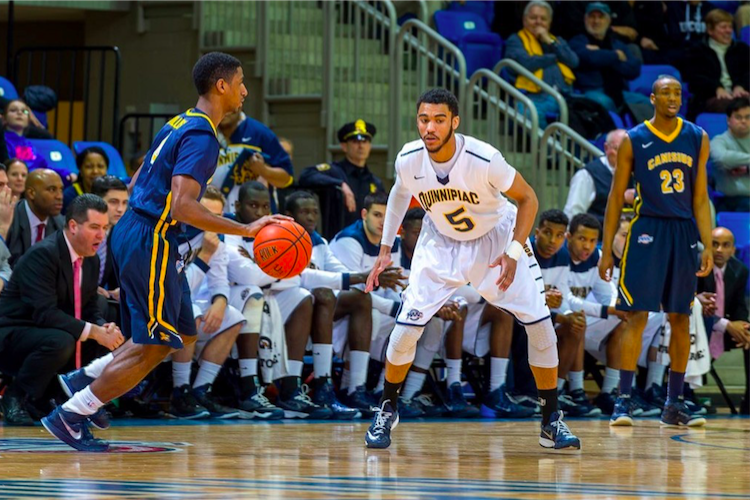
NCAA Rule Changes: The NCAA rules committee made several changes to men’s basketball to improve the pace of play. The changes fans will notice the most include shortening the shot clock from 35 seconds to 30 seconds. Doing so will increase the number of possible possessions per game, thereby increasing scoring output. Last season, teams averaged 67.6 points per game, the second lowest mark in the last 50 years.
Basketball fans know that the last two minutes of the second half in a close game take close to 20 minutes to play out. To combat this, teams will be granted four timeouts each per game instead of five. One timeout is a “use it or lose it” meaning that if a team doesn’t use one timeout during the first half, it loses it and has three timeouts for the second half.
That’s not the only change in timeouts, though. Any team timeout called within 30 seconds of the designated media-timeout will double as both. While this rule has existed on the women’s side for two years, it prevents a team from calling a timeout at 16:10 and then going to the media-timeout at 15:58. Finally, coaches can no longer call a timeout while the ball is live. Instead, a player on the court whose team has possession must call it. This allows refs to keep their eyes on the game and not on a team’s bench.
Another notable change involves the restricted area arc, which has been increased from three feet to four feet. Expect to see a heavy dose of blocking fouls compared to offensive fouls until players adjust to the change.
Players will now have a little more freedom during warm-ups. Starting this year, players will no longer receive a technical foul for dunking the ball during pre-game activities.
Flopping has taken professional and collegiate basketball by storm in recent years, but the NCAA hopes to fight it by issuing Class A technical fouls. The rule is rather restrictive, though. A player can only be called for faking being fouled when the play in question is confirmed by instant replay during a review for a flagrant foul. Essentially, if no flagrant foul is called, flopping will still be rampant.
The penalty for Class B technical fouls will result in just one free-throw attempt instead of two. The NCAA hopes that the roughly 25 rule changes will result in more offense and less stoppages. Fans want scoring and these rule changes should do just that.




